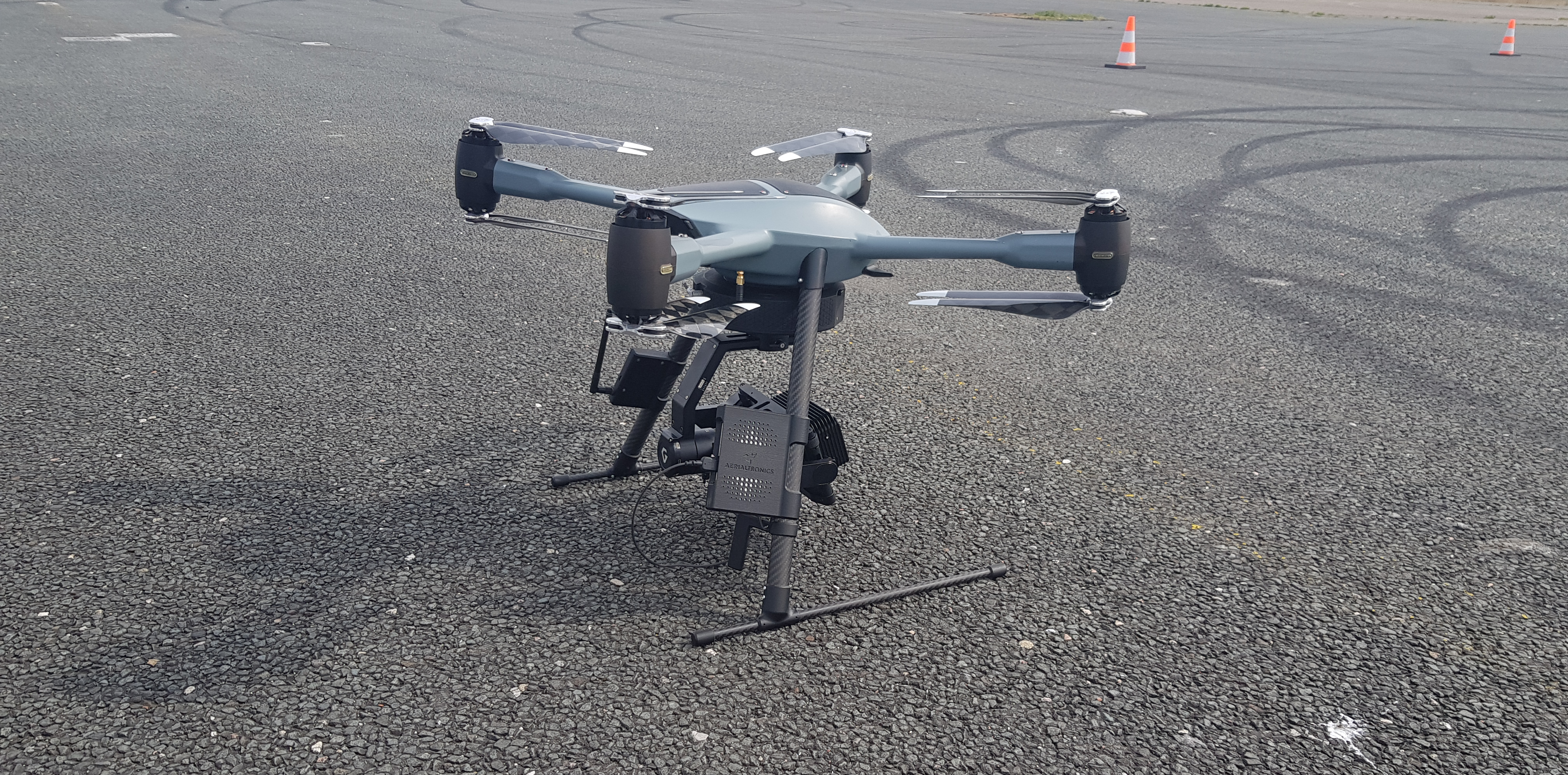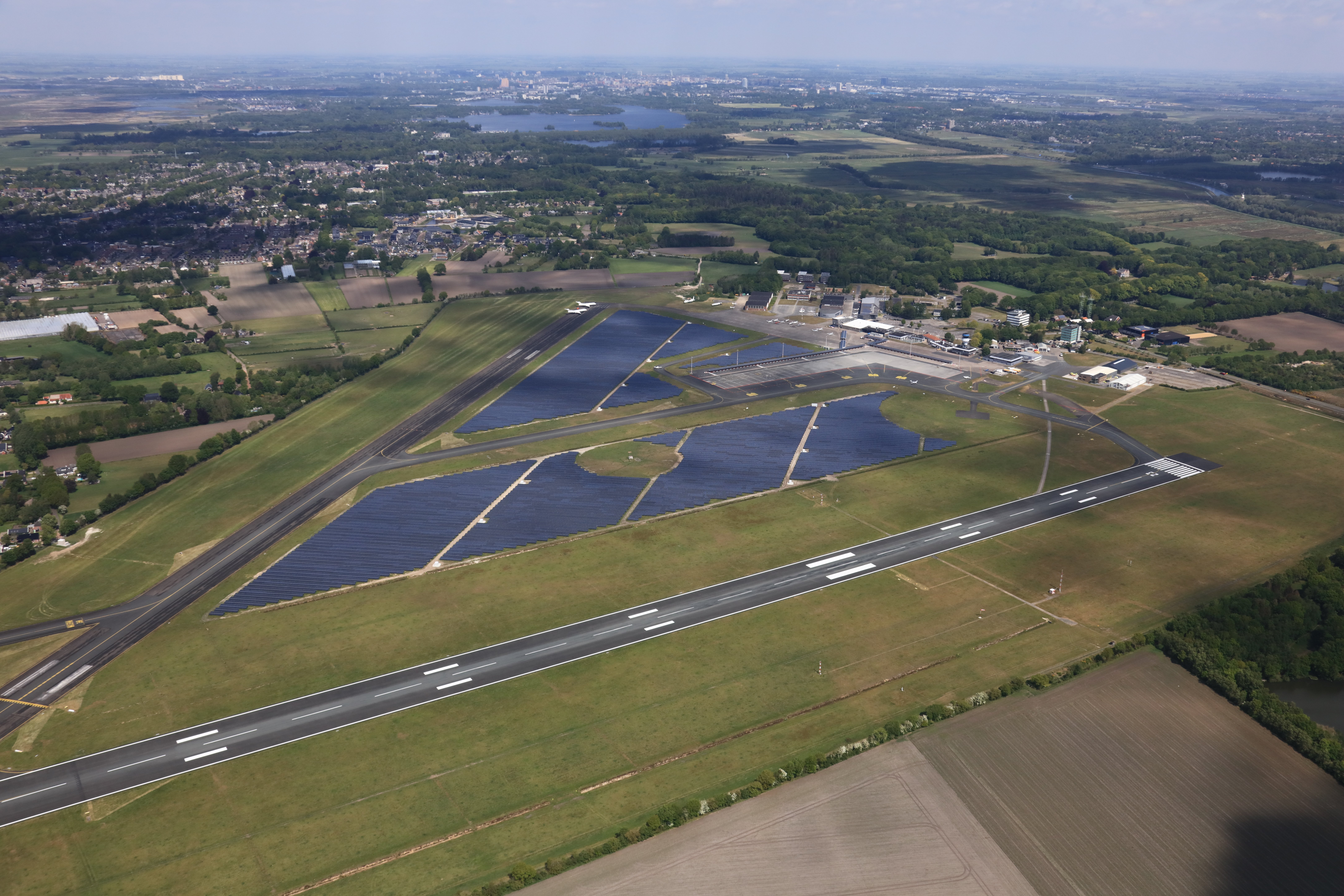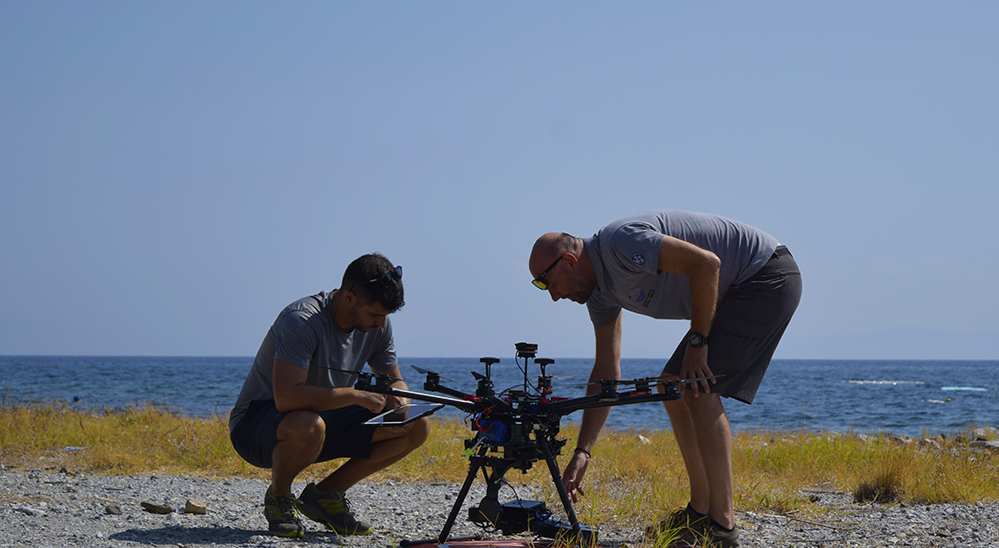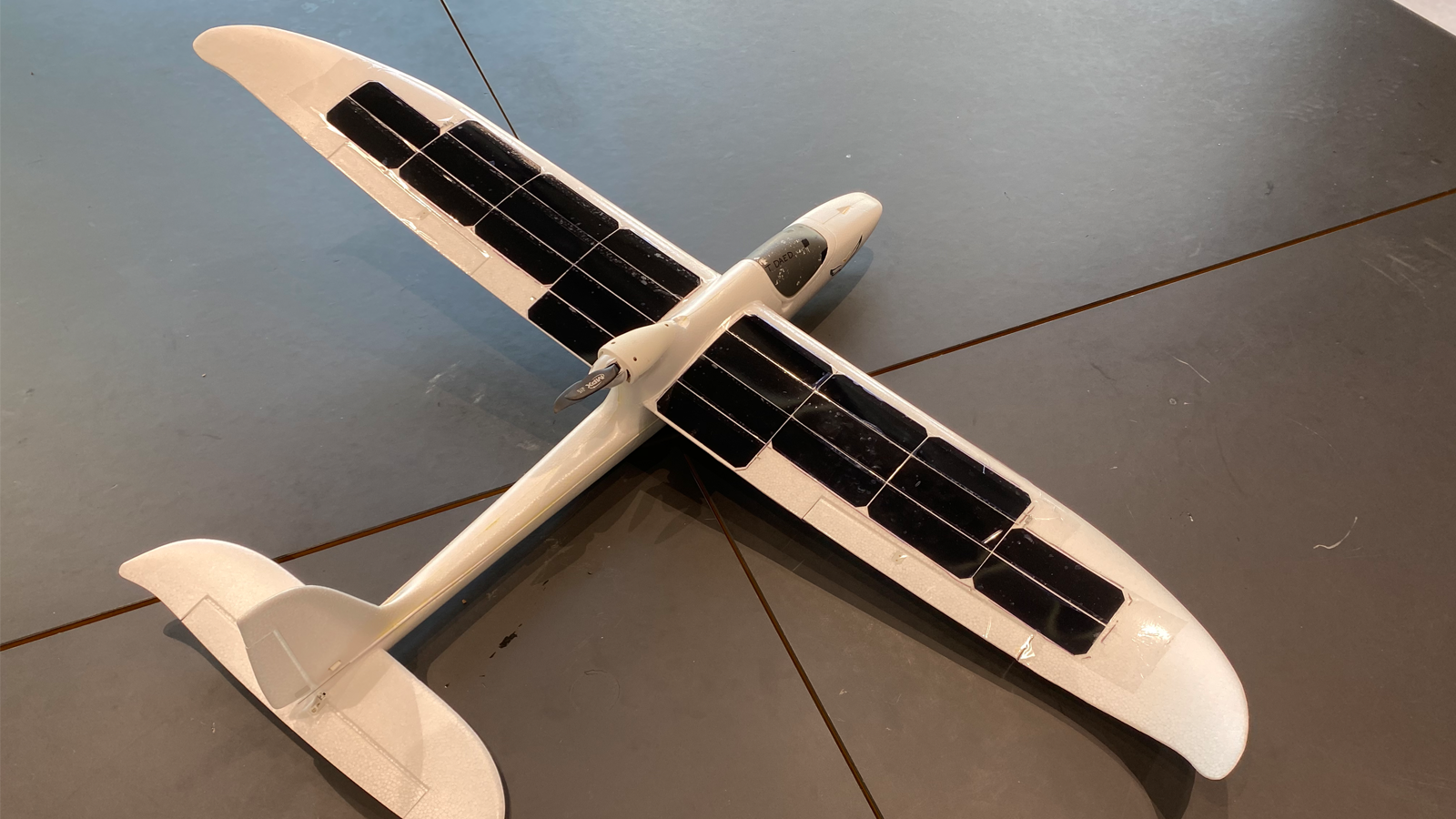
Despite a light marine breeze, the airspace over Valkenburg’s former naval airbase is buzzing with drones. As soon as the aircrafts reach the landing strip, seagulls fly over squawking loudly. Next to the flight area, a Douglas C-47B – a military airplane from the ‘40s – looks up to the sky too. Nowadays, it is being used for some of the scenes of one of the most-seen Dutch theater productions: Soldaat van Oranje – Soldier of Orange. It keeps being performed hundreds of times in the nearby Hangar Theatre.
Rather than looking at the past, the former military area is fully focused on what tomorrow is going to be like. The premises – located in the municipality of Katwijk aan Zee, on the Dutch coast – are home to the Unmanned Valley, a field lab where to develop and test sensor technology. Office spaces, indoor flight facilities, and event areas can be found in the one-time hangars. The 4.5-hectare area opened its doors to companies in 2020. Back then, Katwijk’s municipality and the Delft University of Technology started a partnership and a foundation.
Drone-related technologies are those the Valley attracts the most. Differently from other test facilities in the country, the Unmanned Valley doesn’t share its airspace with anyone. As a result, the outdoor flight box is available for booking at any time of the day – at night too – without worrying about interfering with passenger or freight aircraft routes.
“The bold statement we are trying to make is not just to create an innovation center, but to establish a cluster of over 1000 employees here at the Valley,” says proudly Theo de Vries. He’s the Unmanned Valley’s program manager.
Ongoing expansion
Construction works are still ongoing across the valley, as it keeps expanding. New companies are moving into the office spaces, others are doubling their size. The Unmanned Valley is growing and attracting private investment too. The main building is a test facility itself. On its rooftop, the Dutch Government Real Estate Agency installed a hydrogen system – with two windmills – to store energy. Although the facilities are not H2 powered yet, they might be in the future, if the trial works out well.

“The Valley reached a tipping point, as more than 15 companies and partners are part of the ecosystem,” explains de Vries. “We are in a sweet spot, close to Amsterdam and Rotterdam. Most importantly, having 10,000 m2 of office space in this area sets the Unmanned Valley as one of its kind.”
The Valley also has a private 5G network – key to working with drone data in real-time applications. There is a maker space for experimenting with 3D printing, and other testing facilities – such as acoustic facilities to test drones’ sound – are on the site.
Testing hydrogen flights
By the end of 2022, a BVLOS corridor – Beyond Visual Line of Sight – will connect the Unmanned Valley to the North sea. BVLOS operations are those happening when the pilot doesn’t have a visual line of sight on the drone at all times. In these operations, the aircraft has to avoid autonomously the obstacles on its way.
“Our goal is developing hydrogen flight here. We’ll have a filling point and everything needed to face the North sea’s harsh conditions,” explains de Vries.
The hangar being used nowadays for inside testing – wind blows often here – is going to be the starting point of the corridor, with a dedicated flight center. Being it a lane for autonomous aircraft, ground control equipment must be there. From there, the sea is just 5 kilometers away.

The ecosystem is an added value
As pointed out by de Vries, one of the most valuable assets is the Unmanned Valley’s ecosystem. Aerialtronics – an international company developing commercial drones – has one of its locations in the valley.
“The main reason we are here is to form a community,” says Jaco Markus while busy with one of the Aerialtronics drones in the external flight box. “What’s nice about being here is that we can learn from our neighbors. We can share knowledge on how to apply the same technology in different ways. It is very helpful to have like-minded people around you, even to discuss something while having a beer on a Friday afternoon.” By strolling around the valley, it is not surprising to see employees playing basketball while taking a break from their tasks. It’s all part of the open-minded and start-uppy vibe one can feel visiting it.
Having the chance to fly whenever needed is a significant pro for Markus. Whenever testing a new wing, or a new software feature, he just has to step out of his door to reach the external flight box. “Our office is right there,” he says while pointing to the main building, just a few meters away.




Growing opportunities for students too

There is more within the Unmanned Valley’s ecosystem. The Drone Flight Academy, for instance, teaches how to safely fly aircraft. Furthermore, the TU Delft gives its students the chance to use the facilities to carry out their tests.
In the university’s MAVLab – Micro Air Vehicle Lab – several drones are being designed. One of them takes inspiration from the flyers existing in nature. “It can have a lot of applications,” explains a researcher on bio-inspired drone applications, who prefers to stay anonymous. “Research is the top priority, as we still have to fully grasp the flyers’ aerodynamics and control strategy. In terms of actual applications, there is an ongoing project testing this kind of drone for pollination in greenhouses. Flapping wings are less intrusive than a quadcopter’s blades.”

Another aircraft from the MAVLab fulfills medical tasks. Dennis van Wijngaarden worked on this project. “This drone was designed as part of an EU-funded project – SAFIR-Med – about group-based integration. We embedded a system that makes it visible to air traffic control. The challenge’s goal was to bring a defibrillator from the roof of a hospital to another location – a sports field, for example – within a given area.”
Drones are hot
According to de Vries, drones technology is expected to keep growing. “Drones are hot, and new testing centers will be opened all over Europe.”
But how does the Unmanned Valley place itself in the European scenario? “Comparing it with other testing facilities in Europe, what we offer is unique in terms of trial spaces,” de Vries replies.
As the valley plans to keep expanding its network of businesses, the sky – and the wind sometimes – keeps being the only limit.


